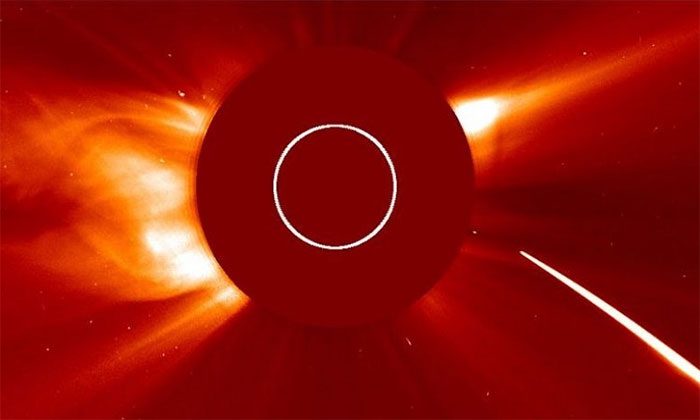The footage from NASA’s SOHO spacecraft captured the “death” of two comets flying close to the Sun on October 22.
Two comets collided with the Sun on the same day. (Video: NASA)
The Solar and Heliospheric Observatory (SOHO), launched by NASA and the European Space Agency (ESA) in 1995, recorded two Kreutz sungrazer comets plunging directly into the Sun. Researcher Karl Battams from the U.S. Naval Research Laboratory stated that on October 22, one comet was accompanied by a smaller comet flying ahead of it.
According to Tabare Gallardo, an astronomer at the University of the Republic in Uruguay, what makes the Kreutz comets unusual is that they all share the same orbit, leading researchers to believe they are fragments of a parent comet. This parent comet, which appeared in 371 BC, was brighter than any star in the sky. Scientists estimate that this comet had a diameter of over 114 kilometers.

Kreutz sungrazer comets orbiting the Sun in an elliptical or hyperbolic trajectory.
SOHO has observed over 4,000 Kreutz comets falling into the Sun. Kreutz sungrazer comets orbit the Sun in elliptical or hyperbolic paths. One end of the elliptical or hyperbolic orbit is the point closest to the Sun. The distance from that point to the center of the Sun is known as perihelion. If the perihelion distance is less than the radius of the Sun, the comet will plunge into the star, according to Lubos Neslusan, an astronomer at the Slovak Academy of Sciences.
When comets collide with the Sun, they vaporize due to the surface temperatures melting, which can reach up to 5,505 degrees Celsius. “No one knows exactly what happens to the material that falls into the Sun; it is likely that it disintegrates completely,” Gallardo stated.
Most other comets travel in more circular orbits around the Sun, making them less likely to collide with the star, at least in the short term. However, they will eventually be consumed by the Sun, and this process is estimated to take millions of years.





















































